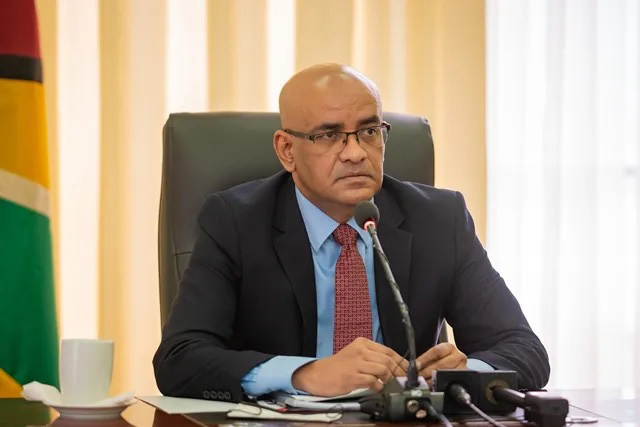With major national infrastructural projects in the pipeline, Vice President Bharrat Jagdeo yesterday said government is aggressively seeking financing from different sources, including China, which he argued has more favourable terms and conditions for lending.
Jagdeo made the comment at a news conference at the Arthur Chung Conference Centre in response to the recent reports of Guyana being able to access US$1.5 billion in loans from China to finance big ticket projects.
While that sum is available to Guyana, he told reporters during his press conference that projects to be funded by the loans are not yet identified as he explained that it would be premature of him to disclose the amount government is seeking to borrow.
Loans of this scale from China would not come with the type of concessionary terms that might be accessed from Western multilateral financing institutions. The financing could also be subject to a host of conditions. Countries in Africa and elsewhere have had to confront the reality of debilitating conditions attached to loans from China.
Approval of the loan would also see Georgetown draw closer to China’s orbit and an expansion of Beijing’s influence here via its ambitious belt and road initiative. It would also be seen as a rebuff to recent statements by Western countries on a range of matters, including the need for the establishment of the still-to-be-activated Natural Resource Fund (NRF) to moderate spending of oil revenues and ensure that the country is not at risk from the Dutch disease.
Access to US$1.5 billion does not necessarily means government will be borrowing that amount, Jagdeo, however, clarified before pointing out China’s conditions and terms for borrowing are far more feasible than other countries since financing is readily available.
He went on to explain that when borrowing from European nations, countries like Guyana are required to pay large sums on receiving the loans followed by interest rates.
“…If we had to borrow just around a 103 million euros from Austria we have to deduct 13 million euros immediately and pay that back as [an] upfront fee and then interest and we have to use one of their contractors. So that’s a western country financing model. The UK has also guarantees… but because we are classified by the OECD [Organisation for Economic Co-operation and Development] we don’t have a credit rating, we are classified as SIDs [small island developing state]. We have this massive, I think, up front financing fee – so you get a loan of a 100 million and you have to take 15 million right away and pay back to the company and interest rate after that and use their contractor. So none of the tight financing from any part of the world comes without ties…,” he explained before stating that it is a similar situation with accessing financing from the United States’ EXIM bank and India.
Last week, sources told Stabroek News that Georgetown is seeking financing through China’s EXIM bank of around US$750 million for a hydropower facility. This would most likely be the planned Amaila Falls Hydropower project.
However, Jagdeo yesterday said that the moneys that will be borrowed from China will not be used to fund the Amelia Falls Hydro Power Project as reported.
He noted that Guyana will face no risk in the development of the project as the investor will be taking all the risk and the country will only be purchasing electricity at an affordable price. Nonetheless, it was indicated that Guyana will have oversight in the construction phase of the project.
Funds are also being sought for a highway from Schoonord to Parika, in Region Three. This project is pegged at US$200 million.
Around US$200 million is also being sought from Beijing for the upgrading of the Annandale to Mahaica stretch, Sheriff Street to Enmore and a new road from Enmore to Clonbrook, on the East Coast. Also on the list of projects is the upgrading of hinterland connections to the tune of US$100 million. The request also covers US$100 m for selected community roads.
The request to Beijing would underline the government’s determination not to be constrained to act within the spending framework that would be set under the NRF. A loan of this scale would significantly pump up external debt and raise concerns about debt sustainability.
On February 4 this year, the National Assembly approved an increase of the domestic debt ceiling. Minister with responsibility for Finance Ashni Singh told the House that the move would allow the government to regularise the outstanding debt of the last administration while creating space to finance a robust development plan.










